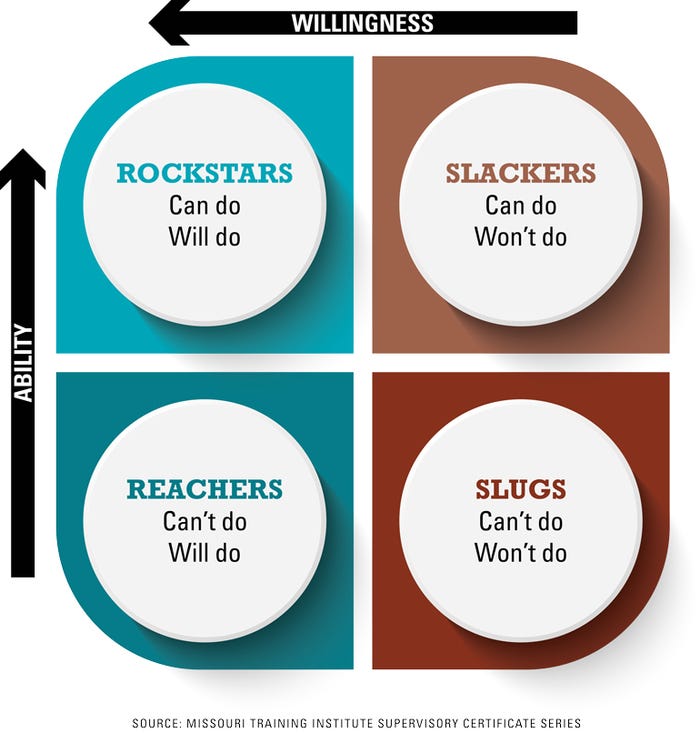May 24, 2022

Editor’s note: This is the second in two-part series on farm employee management. Check out yesterday’s article on how to identify each type of employee.
As the boss or supervisor on the farm, your goal should be to develop more of your employees — those who are family and those who aren’t.
In the last article, I outlined the four different types of employees. Here’s a quick refresher:
Rockstars are highly motivated and skilled.
Reachers have the drive, but lack the skill.
Slackers are highly skilled, but are not motivated.
Slugs are not motivated or skilled.
As a farm manager, you will need to adapt your approach to employee development based on each person’s willingness and abilities. Here’s look at how to motivate each group and what pitfalls to avoid:
Rockstars. These are the 20% of employees who find a way to do 80% of the work. Our organizations would quickly fail without them. However, be careful not to overuse and abuse them.
Rockstars can burn out over time. To avoid this, reward them for doing a good job instead of giving them additional work the Slackers and Reachers haven’t completed. It’s easy to offload jobs on them because we can depend on them. However, if we continue to do this, eventually they will become tired of doing the slackers’ work, and they will become slackers themselves.
Reachers. These individuals who have low abilities, but a high willingness to do the job, benefit from training. Helping them develop their skills will pay huge dividends because they already have the motivation.
I tend to be a little more patient with Reachers. They want to do a good job, but need some help. Still, I can’t let them stay there because of its effect on others. Again, a small investment in them can lead to big payoffs.
Slackers. To be honest, Slackers can be the most frustrating group. They have the skills. They just don’t want to put forth the effort to do a good job. Unfortunately, no amount of training or education improves Slackers’ performance. To encourage these employees to become Rockstars, discover what they care about, and plug into those motivations.
As their supervisor, you must move Slackers toward Rockstar status. Otherwise, you may be forced to push them the opposite direction, treating them as Slugs and helping them leave the organization. Allowing Slackers to remain erodes the motivation of everyone else on the team.
Slugs. It is a hard to say, but on the farm, don’t waste your time on Slugs. They are called exit strategy 101. The sooner you can get these employees out of your organization, the better.

If you struggle moving employees and family members to the upper-left quadrant, then you risk others backsliding.
As the boss, do what you can to move everyone up and to the left. If you don’t, you’ll see how quickly a lazy employee or family member can affect everyone else on the team.
Tucker is a University of Missouri Extension ag business specialist and succession planner. He can be reached at [email protected] or 417-326-4916.
You May Also Like




